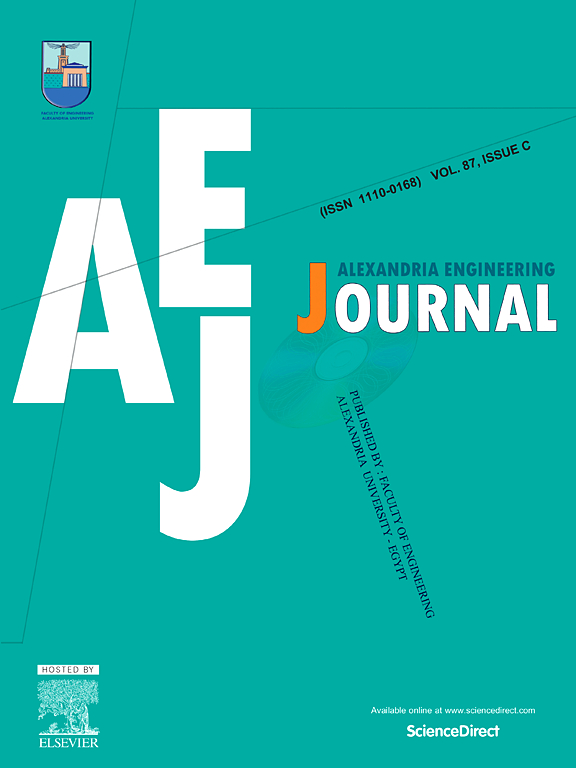利用深度信念网络与卷积神经网络的集成,在工业物联网上实现人工智能驱动的网络攻击检测系统
IF 6.2
2区 工程技术
Q1 ENGINEERING, MULTIDISCIPLINARY
引用次数: 0
摘要
在工业 4.0 中,信息和通信技术(ICT)被广泛应用于金融网络、智能工厂和发电厂等重要基础设施,以实现工业系统的自动化和认证。在电力控制系统中,IIoT 等信息和通信技术改善了自动监控,但原本自主的传统方法现在已与外部网络连接。这一进步带来了传统 ICT 系统的安全漏洞。因此,人们开发和研究了各种网络安全方法,以应对网络攻击和漏洞。在电力控制系统中使用新的网络安全模型会带来风险,因为其安全性未经认证。确保其稳定性和效率对于维持可靠的电力输送以及将这些技术纳入电力控制系统具有重要意义。因此,本研究设计了一种在 IIoT 环境下使用集合深度学习模型(NGCAD-EDLM)技术的下一代网络安全攻击检测。NGCAD-EDLM 技术的主要目的是自动识别网络攻击。在 NGCAD-EDLM 方法中,首先利用最小最大归一化进行数据归一化。接下来,蜜蜂獾算法(HBA)方法选择特征子集。此外,还采用了由两种方法(即卷积神经网络(CNN)和深度信念网络(DBN)方法)组成的集合深度学习(DL)进行分类。此外,DL 技术的超参数选择是通过莲花效应优化算法(LEOA)方法完成的。为了对 NGCAD-EDLM 方法进行实验分析,我们进行了一整套模拟验证。通过性能验证,NGCAD-EDLM 方法的准确率达到 99.21%,优于其他现有技术。本文章由计算机程序翻译,如有差异,请以英文原文为准。
Artificial intelligence driven cyberattack detection system using integration of deep belief network with convolution neural network on industrial IoT
In Industry 4.0, information and communication technology (ICT) was employed in numerous significant infrastructures, like financial networks, smart factories, and power plants, to automate and certify industrial systems. In power control systems, ICT technologies such as IIoT have improved automated monitoring, but legacy methods, originally autonomous, now connect with external networks. This progress has presented safety vulnerabilities from legacy ICT systems. Hence, various cybersecurity approaches are developed and examined to deal with cyberattacks and vulnerabilities. Utilizing new cybersecurity models in power control systems poses risks due to their uncertified safety. Ensuring their stability and efficiency is significant for maintaining reliable power delivery and incorporating these technologies into power control systems. Therefore, this study designs a Next–Generation Cybersecurity Attack Detection using an ensemble deep learning model (NGCAD-EDLM) technique in the IIoT environment. The main cause of the NGCAD-EDLM technique is the automatic recognition of cyber-attacks. In the NGCAD-EDLM approach, the primary data normalization phase utilizing min-max normalization is performed. Next, the honey-badger algorithm (HBA) approach selects the feature subsets. Furthermore, an ensemble deep learning (DL) of two methods, namely convolutional neural networks (CNNs) and deep belief networks (DBNs) methods, are employed for classification. In addition, the DL techniques' hyperparameter selection is accomplished using the lotus effect optimization algorithm (LEOA) method. A complete set of simulation validation is performed to establish the experimental analysis of the NGCAD-EDLM method. The performance validation of the NGCAD-EDLM method exhibited a superior accuracy value of 99.21 % over other existing techniques.
求助全文
通过发布文献求助,成功后即可免费获取论文全文。
去求助
来源期刊

alexandria engineering journal
Engineering-General Engineering
CiteScore
11.20
自引率
4.40%
发文量
1015
审稿时长
43 days
期刊介绍:
Alexandria Engineering Journal is an international journal devoted to publishing high quality papers in the field of engineering and applied science. Alexandria Engineering Journal is cited in the Engineering Information Services (EIS) and the Chemical Abstracts (CA). The papers published in Alexandria Engineering Journal are grouped into five sections, according to the following classification:
• Mechanical, Production, Marine and Textile Engineering
• Electrical Engineering, Computer Science and Nuclear Engineering
• Civil and Architecture Engineering
• Chemical Engineering and Applied Sciences
• Environmental Engineering
 求助内容:
求助内容: 应助结果提醒方式:
应助结果提醒方式:


